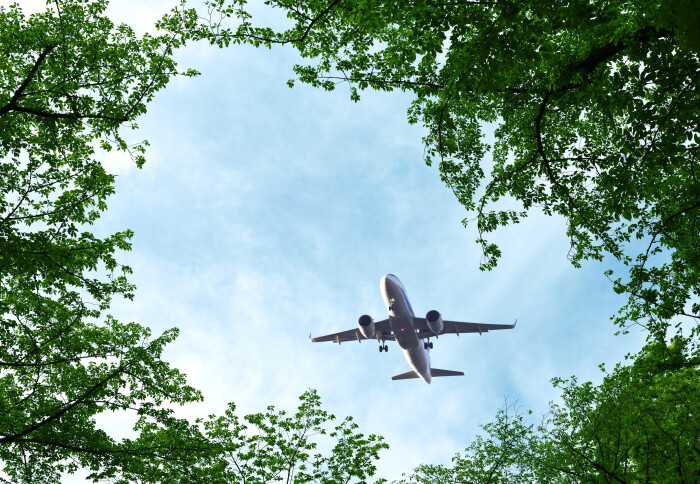Lightweight tech is a ‘game-changer’ for sustainable aircraft health monitoring
by Jane Horrell

image credit: istock.com/kyoshino
A prototype system demonstrated by Electrical and Electronic Engineering researchers aims to help reduce operating costs and aircraft CO2 emissions.
The miniaturised, energy-efficient wireless sensor technology has been developed together with EU partners by the SMARTWISE consortium, part of the Horizon Clean Sky 2 initiative – aimed at reducing CO2, gas emissions and noise levels for the next generations of aircraft.
Data collection
To detect, measure and track the 'wear and tear' on aircraft components, essential data is collected by various sensors which measure changes in pressure, acceleration, temperature, strain or force as part of a structural monitoring system.
However, installing these sensors can increase the weight and complexity of aircraft wiring. The SMARTWISE project’s goal was to collect this data using self-powered, easy-to-install wireless sensors.
Mechanical stresses on an aircraft’s structure are detected using ‘piezoelectric sensors’ – devices that can detect the electrical charge created across certain materials when a mechanical stress is applied.
Conventional structural monitoring systems usually require a high-voltage wired electricity supply to handle the very high number of measurements per second needed to power these sensors. A single wired sensor can come with between 1 - 2 kg of power cable.
The SMARTWISE platform meets the challenges of a lightweight low-powered wireless system with two unique innovations:
- a modular wireless sensor node that can support the processing of the large amount of different sources of data from multiple sensors, such as temperature and acceleration. In terms of performance, the sensor node can support data acquisition rates between 10 and 200 measurements per second, from up to six sensors and a multi-axis accelerometer.
- an inductive energy harvester that wirelessly scavenges enough energy from the aircraft's other supply cables to deliver a continuous electricity supply capable of powering the sensor system.
Lightening the load
The Imperial team, Dr Michail Kiziroglou, Dr Steve Wright and Professor Eric Yeatman, worked on the energy harvesting part of the platform, developing a magnetic flux-funnelling technique based on geometrically shaped soft magnetic cores that can boost the harvested power density.
Their prototype successfully demonstrates an energy autonomous power supply, practical in terms of power, size and installation.
Compared with an equivalent section of a wired system, the weight reduction is substantial, the wireless sensor node – including energy harvester and storage – is just 150g, which is 60% lighter than conventional wired systems.
The SMARTWISE team says as well as lightening the aircraft and reducing fuel burn, the wireless capabilities of the technology will lower installation and maintenance costs by 50%.
Read more about the team’s energy harvesting research:
A 100 mW (10 mW/cm3 power density) power supply is currently in industrial evaluation by Airbus [1].
- [1] Wright et al, IEEE Sens. 23 (18), 20474, 2023
- Inductive Energy Harvesting From Current-Carrying Structures
- Clamped Closed-Loop Flux Guides for Power Line Inductive Harvesting
About the SMARTWISE consortium partners
- CSEM, Neuchâtel, Switzerland was the Coordinator of the project, with responsibility for platform architecture, electronics, and wireless communications.
- Serma Ingénierie, Toulouse, France developed the platform architecture, electronics, housings, and test specifications.
- Airbus Defence and Space, Spain was the Topic Manager.
The SMARTWISE consortium has provided five different energy autonomous sensing prototype solutions for the aviation industry, within four Clean Sky/Clean Aviation programmes and a series of industrial contracts in the last ten years.
The UK is now fully associated to Horizon Europe and Imperial researchers can participate in and lead projects across the programme. To find out more about opportunities in Horizon Europe, please get in touch with the Research Office.
Article text (excluding photos or graphics) © Imperial College London.
Photos and graphics subject to third party copyright used with permission or © Imperial College London.
Reporter
Jane Horrell
Department of Electrical and Electronic Engineering


